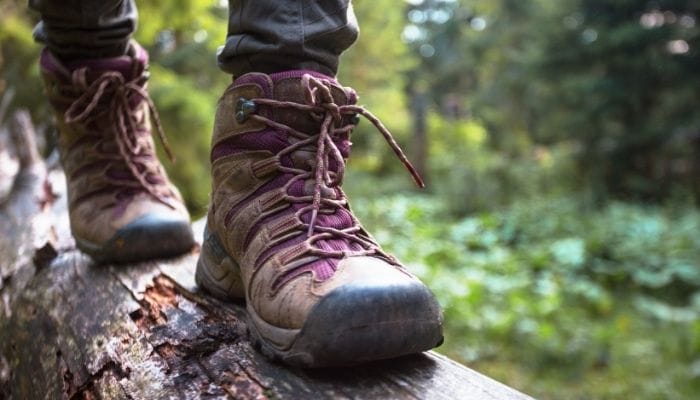Wearing the proper gear is crucial while out on the trail. Take your boots, for example. There are, literally, tons of hiking boots on the market these days. Unfortunately, some are disguised as a quality product and will only show their true colors while out on the trail as the boot begins to leak water, cause some nasty blisters, or begins to pull apart by the seams. So, to help the wary, we’ve assembled some top qualities to look for in a hiking boot.
What To Look for In a Hiking Boot
Here are some quality boot tips to keep in mind when choosing a pair:
Fit. The fit is perhaps the most important quality of a hiking boot. Try out the boots while wearing a hiking sock as you would while on the trail. Walk around in them to ensure they’re a snug fit. Don’t settle for boots that slide on the foot. Walk up a hill. If you feel the heel moving, that’s bad news. Walk downhill. If your toes bump the end of the boot, they’re too small.
Socks. Hiking boots are meant to be worn over hiking socks. Hiking socks have significant padding, allowing for a more cushioned and comfortable walk. Hiking socks also take perspiration off the feet, helping your feet to stay dry. Make sure any boot you buy fits comfortably over a hiking sock. Don’t try on hiking boots with cotton socks. It’s crucial to wear hiking socks on the trail. Otherwise, you could be in for some blisters.
Comfort. Alongside the fit, comfort is everything. If a boot is exceedingly uncomfortable directly after purchase, they’re unlikely to get a lot better over time. Hiking boots can stretch out, but if there is painful pinching, then they will most likely always be painful.
Waterproof. This is just a recommendation. Any boot should be waterproof right out of the box (such as Gore-Tex) or made from materials (such as leather) that can be made waterproof with the application of various sprays or gels. On a hiking trail, you’re likely to end up crossing streams, walking across puddles, and in general, getting your boots wet. Wet feet can lead to blisters, cold feet, and a loss of heat in general. Thus, it’s important to keep your feet dry.
There’s an old saying that the shoes designed to excel in one area are bound to fail in another. But, with proper inspection, you can find shoes and boots for hiking that serve multiple needs. No doubt, today’s hiking footwear is far superior to what existed years ago. This goes to show that many of the qualities to look for in a hiking boot can now all come together in one boot.







